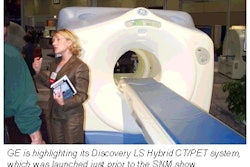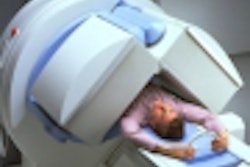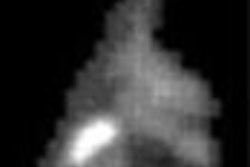TORONTO - FDG-PET scans of Alzheimer's patients produce more distinct findings and results that correlate more closely with dementia severity than do HMPAO-SPECT studies, according to research presented yesterday at the 48th annual Society of Nuclear Medicine meeting.
While HMPAO-SPECT and FDG-PET can detect similar aspects of blood flow and metabolic abnormalities of Alzheimer's disease, the two imaging techniques produce findings that correspond well in only certain regions of the brain, said Dr. Karl Herholz of the Max-Planck-Institute for Neurological Research in Cologne, Germany.
"Correspondence of FDG-PET and HMPAO-SPECT is limited to the main findings of temporo-parietal and posterior cingulate functional impairment," Herholz said.
Researchers from the Max-Planck-Institute and the department of nuclear medicine at the University of Cologne used statistical parametric mapping techniques to identify and compare abnormal brain areas objectively and quantitatively. Twenty-six patients with mild to moderate Alzheimer's disease (age 66 ± 9 years with a mini-mental state examination of 22.5 ± 4.2) and six nondemented control subjects (age 63 ± 11) were evaluated with HMPAO-SPECT and FDG-PET studies.
For SPECT studies, a Prism 3000 gamma camera (Marconi Medical Systems, Cleveland) with three rotating heads and converging collimators was used. PET studies were performed on an ECAT HR (Siemens Medical Solutions, Hoffman Estates, IL) with 370 MBq FDG and image acquisition of 20 to 60 minutes after injection.
The researchers performed the same processing steps on both exams, which consisted of smoothing (using a 12-mm Gaussian filter) and spatial normalization (SPM99). All scans were z-transformed with reference to mean and standard deviation of normal controls, according to the study team. A voxel-wise comparison of the PET and SPECT z-maps was performed for each patient.
The study team found that overall correlation between PET and SPECT scans was significant, although not close (average r=0.43). The best correlation was found in temporo-parietal and posterior cingulate association cortex, thalamus, and caudate nucleus. In those areas, the number of abnormal voxels were highly correlated between PET and SPECT (r=0.90 at z threshold -2.25), according to the researchers.
The more demented the patients, the more abnormal voxels, a condition that was consistent on both PET and SPECT studies, Herholz said. The researchers discovered discordant findings most frequently in temporo-basal and orbitofrontal areas, and in the cerebellum, parahippocampal, and mid-cingulate cortex.
The researchers found tracer uptake reductions to be more significantly pronounced in PET than in SPECT. PET also fared better (best r = -0.78 at z= -3.5) than SPECT (best r=-0.60 at z=-3) in correlation between dementia severity (as scored by MMSE) and the number of abnormal voxels.
"The number of corresponding voxels of PET and SPECT increases with dementia severity," Herholz said. "With mild dementia, we had quite a number of patients that had very poor correspondence between PET and SPECT."
By Erik L. Ridley
AuntMinnie.com staff editor
June 25, 2001
Click here to post your comments about this story. Please include the headline of the article in your message.
Copyright © 2001 AuntMinnie.com



















